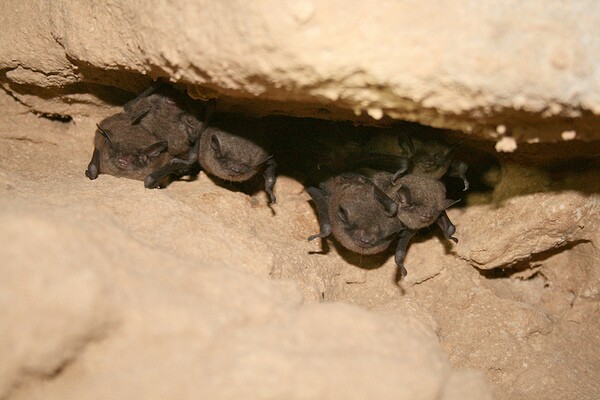Another Endangered Species Kill Permit Issued to Make Way for Wind Energy

Last month a California wind turbine operator wanting to build a facility in the Mojave Desert became the received legal permission to kill an endangered species -- in that company's case, a California condor. Now, another wind company has gotten similar permission from the U.S. Fish and Wildlife Service: in this case, allowing the company to kill up to 130 Endangered Indiana bats over the life of the project.
The 125-megawatt Buckeye Wind Project, west of Columbus in central Ohio, received an Incidental Take Permit from the Fish and Wildlife Service last week allowing the facility's wind turbines to injure or kill an average of about five bats per year.
According to an article in the local paper the Springfield News Sun, wind turbine proponents Everpower Wind Holdings have been in negotiations with FWS since 2008 over the facility's likely effect on the endangered bat, which is in trouble mainly due to loss of its preferred eastern riverbottom hardwood forest habitat.
The Indiana bat, listed by the Feds as an Endangered Species since 1967, is also under threat from recreational cavers, pesticide contamination in its insect food base, and the epidemic of White-Nose syndrome now devastating Eastern bat populations.
Bats are thought to be especially sensitive to injury from wind turbines not only because of direct collisions with spinning blades, but also due to the rapid changes in air pressure that the blades cause as they spin. That's due to a syndrome called "barotrauma," in which bats' lungs rupture and hemorrhage after air pressure drops suddenly. As part of the agreement with FWS, the Buckeye Wind Project's operators must raise their turbines' "cut-in speeds" -- the wind speed at which the turbines begin to produce power -- during seasons when bats are active. There's some indication, though much more research needs to be done, that raising cut-in speeds can reduce mortality for some species of bats by between 50 and 83 percent. That's likely because bats are less active during periods of stronger winds.
Buckeye's owners must also preserve some 217 acres of nearby bat habitat. If the detected death toll for Indiana bats over the first few years is lower than anticipated, FWS may allow the restrictions to be loosened somewhat.
This isn't the first wind facility to run into obstacles related to Indiana bats: a 2009 ruling stopped construction on a West Virginia wind facility that would have harmed Indiana bats as well. That project's owners, Beech Ridge Energy LLC, have since applied for Incidental Take Permits for both Indiana and Virginia big eared bats.


